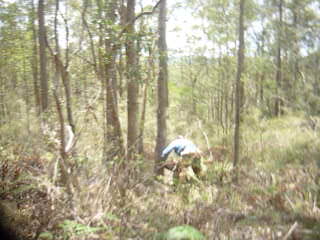Week 2 2018
This week started really hot, went through thunder and lightning, headed jumper cold with snow down to 1500m and ended in damp drizzle. We pumped up four full tanks of water from the house tank and the dam levels started to go up.
On Monday we collected a WWOOFer from Cooma. Margot, a university student from Paris, was keen to spend some time on the farm and improve her English. WWOOF stands for Willing Workers on Organic Farms and is a great way for travellers to find hosts - free board and lodging in exchange for at least four hours a day labour. I spent many months doing this in Australia, New Zealand and England and learnt a lot. Wwoofers give us the chance to concentrate on a few projects that would be onerous and put off without help and to share our farm and our food with interesting people.
Our two Duroc pigs, Chocolate and Caramel, are no longer piglets and have managed to turn over all the soil in their 12m by 6m pen. It was time to give them a fresh patch. Pigs are homebodies and once they have worked out their patch they can be reluctant to move. They also have a very healthy respect for electric fences so we could remove the outside panels and set them up around the new patch without the pigs escaping. They stayed behind the electric wire until we were almost done. Chocolate is the dominant pig so he went into the new pen happily while we had to chase Caramel to step over the line between old and new pens even though there was no barrier there at all.
The older the pigs get the quicker they turn over the soil and the more often the pen need to be moved. We bought these pigs in November and they are fattening fast - with fallen apples and excess zucchinis gradually replacing the grower pellets. By March they should reach 70 kg and head off for their one bad day.
The next task was to pick the three blackcurrant bushes. With four children and two adults it took about an hour to strip the bushes. We picked just over 4 kg.
For preserving recipes our go-to book is 'A Year in a Bottle' by Sally Wise and her recipe is:
2 kg blackcurrants, washed, stalks removed
4 cups water
3 kg sugar
60 g butter
After bringing the currants and the water to the boil and cooking for 10 minutes, we added the sugar and cooked until it was dissolved. Then we added the butter and boiled hard until the setting point was reached.
This made 18 jars (mostly 375 ml ones).
Once the pens were cleaned of poo, we washed down all the walls and surfaces with a dilute solution of a pyrethrum based powder that eradicates and prevents mites. We have only had one outbreak at Opportunity Farm but it seems sensible to be proactive while we are cleaning the pens.
We have been slowly building a shearing shed for our small flock of sheep. The building is almost complete but we need to set up some yards and fencing to direct the sheep into and out of the building. For fencing we needed posts. Our other property has 300 acres of bush and most crucially plenty of red box trees. These have the advantage of being too dense to be eaten by termites and the disadvantage of not being straight. There are plenty of young trees about 20-25cm in diameter. From most such trees it is possible to cut two posts and maybe two stays. The stays are the support posts that angle into the ground from the main post to keep it upright when the fence wires are tightened.
Dropping a Red Box tree to make posts
Trimming the tree to make stays (note the bendy trunk!)
Once the posts were dropped off back at the Farm we dug some holes. Each hole was dug so that a third of each post is in the ground ie a post of 2.1m length goes into a 0.7m hole.
Before we could site all the posts I needed to build a chute. This is a ramp down which the shorn sheep is pushed once shearing has been completed. The chute is about 500mm wide and 1200 high.
I chose to make the ramp out of palings and the walls and roof from corrugated iron. All the components except for the palings came from a collapsed shearing shed a friend allowed us to remove. The round posts were trees cut in the 1950s and now reused 60 years later.
To complete the walls and roof I need some more roofing screws so it will need to be finished later.








love your work guys
ReplyDelete